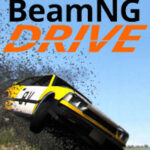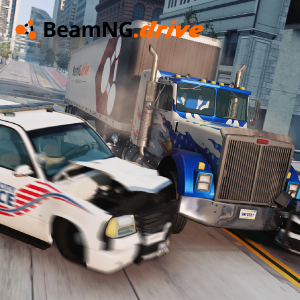Popular Now
Introduction
BeamNG.drive is often celebrated as the gold standard of vehicle physics simulation. With soft-body damage modeling, detailed terrain physics, and dynamic part failure systems, the game promises a level of realism far beyond traditional racing simulators or driving games. However, this commitment to realism has created a pressing issue for the community: achieving smooth, stable gameplay without sacrificing detail. This article explores the performance-stability conflict in BeamNG.drive, detailing its origins, technical intricacies, player feedback, modder intervention, and developer responses.
1. The Foundations of Realism: BeamNG’s Physics Engine
BeamNG.drive was built from the ground up around its soft-body physics engine. Unlike traditional racing games, which use simplified damage models and rigid physics calculations, BeamNG simulates each vehicle as a network of interconnected nodes and beams.
This system allows for incredibly detailed collisions, part deformation, and weight distribution. Each tire, axle, and suspension component reacts dynamically to terrain and force. However, simulating these physics in real time demands serious computational power.
Key Detail:
-
Each vehicle can involve up to 3,000 individual physics calculations per frame.
-
Terrain and environmental elements are also dynamic, increasing load.
2. Early Optimizations: A Game for High-End Machines
When BeamNG.drive launched in early access, the developers openly stated that it was not intended for low- or even mid-range PCs. In fact, the game’s initial user base was largely made up of sim-racing enthusiasts and modders with custom-built rigs.
At this stage, the issue of performance wasn't front-and-center. Players expected it to be demanding. However, as the game grew in popularity and mainstream YouTubers showcased it, more casual players entered the scene—bringing performance complaints with them.
Common Complaints Included:
-
FPS drops below 30 on medium settings.
-
Game freezing during vehicle spawns.
-
CPU overheating with multiple vehicles.
3. The Multiplication Problem: Adding Vehicles Destroys FPS
One of the most unique features in BeamNG.drive is the ability to spawn multiple vehicles and control their behavior using AI. Whether orchestrating highway pileups or testing multi-vehicle crash scenarios, this feature is central to the game’s sandbox appeal.
But the moment users go beyond 3–4 vehicles, performance often plummets. This is due to the CPU-based nature of the physics calculations—each additional vehicle doesn't just add a polygonal model, but a web of node-beam interactions.
Why This Matters:
-
BeamNG does not currently support multi-threaded physics processing.
-
CPUs with high single-thread performance are favored, but not everyone has them.
4. GPU Isn’t the Savior: The CPU Bottleneck Explained
Many new players assume upgrading their GPU will solve performance issues, but BeamNG.drive’s bottleneck is predominantly on the CPU side. Because each frame relies on heavy single-thread calculations for vehicle physics, even high-end GPUs often sit underutilized.
This creates confusion, especially for gamers coming from graphically intensive titles where the GPU is the main limiter.
H3: How BeamNG Uses Your Hardware
-
CPU: Handles physics, AI logic, deformation, and terrain response.
-
GPU: Renders visual elements and lighting—but waits for physics calculations to complete.
H4: Symptoms of CPU Bottleneck
-
Low GPU usage (e.g., 30–40%) during gameplay.
-
Frequent stuttering during complex collisions.
-
High frame latency (input delay).
5. Mod Madness: Community Content Amplifies the Problem
BeamNG has a massive modding community that creates everything from detailed car models to entire cities. While mods greatly expand the game’s replayability, they often lack the optimization present in official content.
Popular mods like high-poly sports cars or ultra-detailed urban maps bring even high-end systems to their knees. In some cases, vehicle mods are so complex that they double or triple the physics calculations required per frame.
H3: The Hidden Cost of Modding
-
Increased polygon count slows rendering.
-
Poorly optimized JBeam structures overload the physics engine.
-
Conflicting scripts can cause crashes or data leaks.
H4: A Few Notorious Mod Issues
-
Custom turbos with incorrect parameters causing FPS spikes.
-
Broken tire friction models that stress CPU physics unnecessarily.
-
Environments with thousands of individually simulated trees.
6. Inconsistent Frame Times: Stutter vs. Lag vs. Freezes
BeamNG players often confuse different types of performance degradation. Understanding the difference helps in troubleshooting and also clarifies the depth of the engine’s complexity.
List of Issues:
-
Stutter: Caused by loading new assets or AI logic recalculating mid-game.
-
Lag: Often due to mod interference or memory leaks from high-poly assets.
-
Freezing: CPU overload during major collisions or spawning events.
Each of these issues arises from different layers of the engine. For example, stutters may occur when spawning a car because the JBeam structure needs to be parsed and initialized. In contrast, lag might be tied to scripts constantly refreshing torque curves.
7. Thermal Throttling: Real-World Heat Limits In a Simulated World
Due to BeamNG’s heavy CPU usage, many users encounter thermal throttling. This especially impacts laptop gamers or users with inadequate cooling solutions.
BeamNG doesn't just push the CPU—it punishes it. Extended play sessions often result in high temperatures, leading to reduced clock speeds, frame drops, and even system shutdowns.
H3: Mitigation Tactics
-
Undervolting your CPU using tools like Intel XTU or Ryzen Master.
-
Limiting vehicle count during long sessions.
-
Using custom fan curves or external cooling pads.
H4: Real Consequences
-
User-reported CPU temps reaching 90°C+ in under 15 minutes.
-
GPUs often unaffected, leading users to misdiagnose the issue.
8. Developer Feedback: What BeamNG GmbH Has Tried
To their credit, the BeamNG team has not ignored performance complaints. Over the years, several patches have introduced tweaks aimed at improving system load.
Notable Changes:
-
LOD (Level of Detail) optimization for distant vehicles.
-
More efficient AI routing to reduce unnecessary calculations.
-
A debug mode for identifying mod-related FPS loss.
However, the core issue—CPU-bound physics—remains unchanged. The developers have acknowledged that implementing full multi-threaded support is extremely difficult due to how the game was architected.
9. The Illusion of Fixes: Why Settings Tweaks Only Go So Far
Many YouTubers and players suggest various settings changes to improve performance. While some work—like reducing shadows, disabling reflections, or lowering resolution—they only affect the GPU side of the pipeline.
The physics, again, stay rigid. Even running the game at 720p on low won’t help if you're trying to simulate 10 AI vehicles driving through a city.
Common Misconceptions:
-
“Lowering graphics will improve FPS” – only true up to a point.
-
“Disabling texture filtering helps CPU” – it doesn’t.
-
“Adding RAM boosts FPS” – only if you were RAM-limited to begin with.
10. The Road Ahead: Solutions, Hopes, and Community Demands
Looking forward, players and developers are at a crossroads. The game’s realism is its strongest selling point, but also its biggest limiter. To expand its player base and support long-term playability, BeamNG will need to address its engine structure.
Potential Paths:
-
Introduce basic multi-threading for low-priority physics tasks.
-
Offer pre-baked physics modes for lower-end users.
-
Implement AI simplification on a per-vehicle basis.
Until then, many in the community suggest BeamNG.drive should better communicate system requirements and performance tips directly within the game, especially for newcomers.
Conclusion
BeamNG.drive’s performance-stability conflict is not just a bug or quirk—it’s a fundamental result of the game’s greatest strength: realism. By simulating every bolt, bounce, and break in real time, the game offers unparalleled immersion. But that same detail creates barriers for players without high-end hardware. As the game evolves, striking a balance between simulation depth and playability will be key. Until then, BeamNG remains a masterpiece of physics wrapped in the constraints of current technology.


















